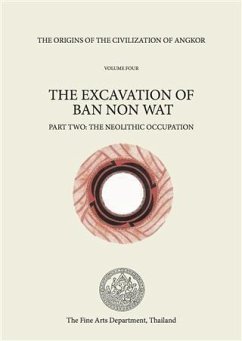This volume reports on the initial settlement of Ban Non Wat and represents a further step towards illuminating the prehistoric societies of the upper Mun Valley during the two millennia of cultural changes that led ultimately to the swift transition to the state as represented at Phimai and beyond, to the civilisation of Angkor. It begins by describing the mortuary sequence. One of the many surprises encountered during the excavations was the presence of burials laid out in a flexed position. This was a widespread practice of hunter-gatherers in Southeast Asia, and it is likely that a group of hunters and gatherers occupied the area and used the mound of Ban Non Wat as a cemetery. Paradoxically, the radiocarbon determinations for these are contemporary with those of the Neolithic occupation. There are two phases of Neolithic occupation, which began in the 17th century BC and ended about six centuries later. These differ on the basis of the orientation of the human graves and the nature of the mortuary offerings placed with the dead. It proceeds with a consideration of the economy and the material culture of the Neolithic inhabitants who occupied the site from the 17th to the 11th centuries BC. This is the first complete report on a Neolithic site in Southeast Asia.
Dieser Download kann aus rechtlichen Gründen nur mit Rechnungsadresse in A, B, BG, CY, CZ, D, DK, EW, E, FIN, F, GR, HR, H, IRL, I, LT, L, LR, M, NL, PL, P, R, S, SLO, SK ausgeliefert werden.



